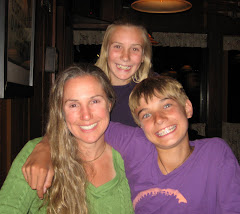
I'm very sorry to have to miss tonight's class, in which we begin discussing Cinderella narratives. Cinderella is an issue very close to my heart on many levels -- so much so, in fact, that it forms part of the chorus of one of my songs, "Hollow Victory."
As a mother of young children, I always sought to expose my children to high-quality literature while sheltering them from narrative suggestive of stereotypes. At the same time, I recognized that there is, as Vivian has discussed, "cultural capital" in familiarity with popular stories, both within and across generations, so I didn't want to avoid the classic children's stories entirely.
Instead of Jack and the Beanstalk, we read Mary Pope Osborne's Kate and the Beanstalk, and my children's first association with beanstalks will always be that of a headstrong, brave, and perhaps reckless girl determined to save her family and right a wrong. Another interesting retelling of a traditional story is Virginia Hamilton's The Girl Who Spun Gold, a Caribbean spin on Rumpelstiltskin, featuring a father afflicted with hubris and a daughter blessed with the cunning and humor to redeem at least part of his mistake. One of the great pleasures of reading this story, for someone who loves language and accents, as I do, is trying to read it in the lyrical Caribbean voice in which it was written.
We have several Cinderella retellings in our home library, but one that has always had a special place in my heart is Erica Silverman's Raisel's Riddle. Raisel takes place in long-ago Poland, where the poor granddaughter of a Talmud scholar is forced to find her own way in the world during the harsh winter in which her "zaydeh" dies. She finds work as a housekeeper in a rabbi's home, over the objections of his head housekeeper, who is determined to make Raisel's days miserable and to thwart any social contact between Raisel and the rabbi's family.
The Cinderella parallels in Raisel are strong, as Raisel is granted three wishes by a magical woman in repayment for her kindness and uses her wishes to attend a Purim party in the costume of Queen Esther. Although Esther's story is not retold in the book, it bears note that Esther was a Jewish woman in ancient Persia who risked her life by standing up to her king and his advisor to save her people.
Raisel does offer marriage as the basis for salvation from hardship -- perhaps as an homage to the traditional Cinderella narrative, or perhaps just in recognition of the fact that most hardships are borne more easily in a context of love and partnership -- a point minimized by counternarratives like Princess Smartypants. In a twist that improves upon stories like Princess Smartypants, however, Raisel does not peddle attractiveness as the key factor in determining a woman's marriage prospects. Although the wise and kind rabbi's son does comment on how lovely Raisel looks in her Queen Esther costume, her true appeal for him lies in her wisdom and interest in learning. Best of all, her answer to his ultimate query is not a foregone conclusion.

2 comments:
Daphne, you know all the great books. I have never heard of Raisel but it sounds like a winner.
I have never heard of it either. Thank you for sharing Daphne. It is clear you are a wealth of information.
Thanks
vivian
www.clippodcast.com
Post a Comment